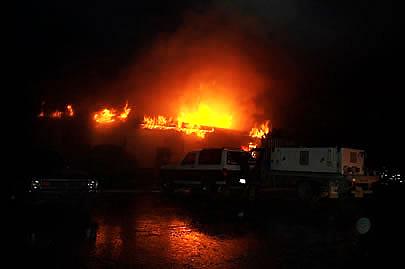Smoke Alarms - Smoke Detectors - Fire Alarms

These are all terms for devices and systems that are present in your work space and home to alert you that there is a fire and you need to get out of the building.
Smoke alarms are typically found in homes and sense smoke and activate with a piercing sound designed to wake you up so you can get out of your house.
Fire alarms, typically found at work, are a system of input devices such as smoke detectors and manual pull stations, output devices such as horns and strobe lights for the deaf, and a control panel that is often hooked to a device that can automatically alert the fire department.
These alarm systems are the first line of defense for our lives and our buildings and their contents. Properly installing and maintaining alarms will help ensure that people can quickly exit a burning building and that emergency responders respond quickly to fires.
The NPS conducts assessments of buildings to determine their compliance with fire codes. We found some serious trends:
- the lack of required inspection, testing, and maintenance on smoke alarm systems,
- batteries removed from battery-operated detectors,
- housing units that do not have smoke alarms or have improperly installed smoke alarms.
People often remove the battery or knock the smoke alarm off the ceiling because of too many false alarms. This often happens because smoke alarms are placed too close to cooking smoke or shower steam or because they are dirty with dust or cobwebs. If this is the case in your house, start by cleaning the detectors with a vacuum cleaner hose attachment. If that does not work, please contact your housing manager about having them moved.
Never sleep in a place that does not have an operating smoke detector!
Fire Info for You
Everyone:
Almost two-thirds of deaths in home fires were in homes that did not have smoke detectors. Smoke alarms that are properly installed and maintained play a vital role in reducing fire deaths and injuries. Additionally, people who are deaf or hard-of-hearing should use alarms with strobe (flashing) lights that have been tested by an independent testing laboratory.
Park Leadership:
- Did you know that data collected through comprehensive condition assessments in NPS buildings show that almost 50% of our buildings where people sleep do not have or have inadequate smoke detection? Read what OSHA has to say on fire detection systems and employee alarm systems.
- Facility managers, here are resources for fire alarm maintenance.
- Superintendents, follow the Structual Fire Program's Plans and Policy page.
- National/Regional Leadership: Did you know that 41 CFR 102-80.90 is the law for all federal agencies on safety and fire prevention? Read about your responsibilities here.
Last updated: September 6, 2016
